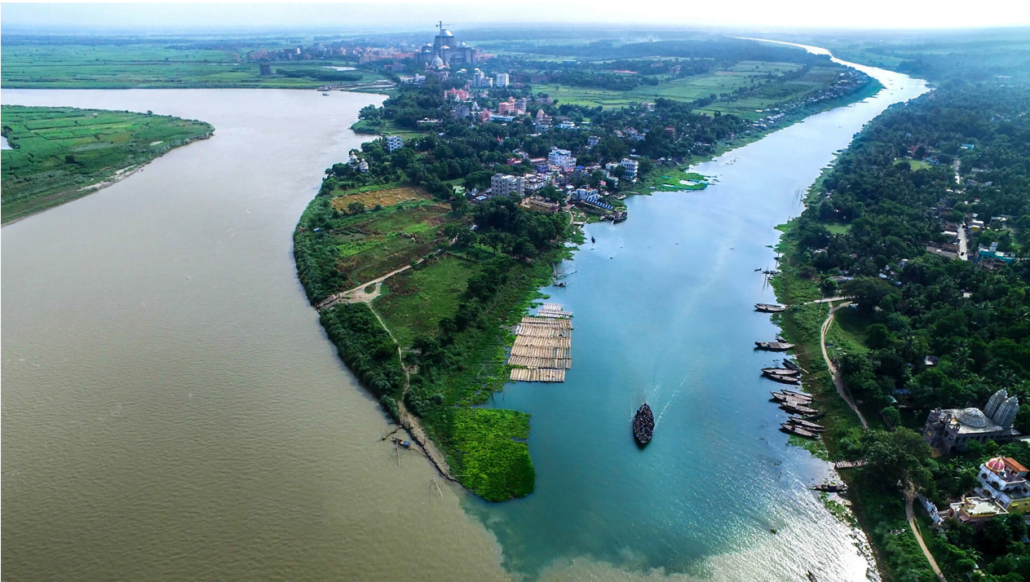Sacred Journeys (online) Conference
The months of limited or no travel pass rapidly. I’ve been remaining (almost) completely in one place for the last year and two months as the Covid pandemic continues to threaten our well-being.
In the meantime, but already more than two months ago, I was fortunate to participate in the online Sacred Journeys global conference, an international group of scholar-pilgrim-enthusiasts from around the world, all contributing in a wide range of ways to the growing field of pilgrimage and religious tourism studies.
My own presentation, titled “Reinscribing Vraja (Part 2): A Krishna-centered pilgrimage replication in West Bengal, India (From a Local to an International Pilgrimage Site)”, continued my effort to call attention to the living tradition of pilgrimage to and within places associated with Śrī Krishna. My specific approach is to consider how the dhāma – the sacred land that Vaishnavas (Krishna-devotees) regard as sacred and indeed “nondifferent” from Krishna, becomes “replicated” in various locations. How does such replication take place (through sacred texts and narratives of saints who “discover” or otherwise envision places as extensions of the original Vrindavan)? Where are these replications to be found (not only in India)? And what new pilgrimage practices are to be seen (like participation by people from all over the globe)? Here is the abstract to my presentation:
The replication of Vraja-Vrindavan, the prototypical land of Krishna in northern India, has a history within India that goes back to at least the late sixteenth century. A particularly striking replication is an area some four hours’ drive north of Kolkata on the Ganges plain. Known as Navadvip (or Nabadwip, Sanskrit Navadvīpa) or “Nine Islands” due to the web of ever-shifting course of this branch of the Ganges, it is celebrated by the followers of the 16th c. saint Sri Chaitanya as the place of the latter’s birth, childhood and youth, but also as the “eternal abode” of him who, in turn, is regarded as a sort of re-appearance of Krishna, albeit absorbed in the mood of being a devotee of Krishna. A late-nineteenth-century revivalist of the tradition, Kedarnath Bhaktivinoda, after “rediscovering” the exact place of Chaitanya’s birth, tells of a vision of a grand temple being constructed near this place. In short, what is interesting is that Navadvipa has become a place of international pilgrimage in the late 20th and 21st centuries, as well as international settlement. In this presentation I aim to sketch some of the complexities involved in the changes taking place in Navadvip (especially it’s center area, Mayapur) to which two pilgrimage “guidebooks”—one from the early 18th century and one from the late 19th century, serve as background narratives.

There were 25 presentations altogether over the three days of the conference, in a very wide range of themes and geographic foci, from “Walking for Justice and Reconcilliation in Australia (Ian McIntosh) to “The Meditarranean Ancient Salt Paths and Marian Maritime Pilgrimages (Mirela Hrovatin) to “Graves as Pilgrimage Sites: A Case of the Novodevichy Cemetery (Moscow, Russia)” (Anna Bochkovskaya). A special highlight for me was my friend Hrvoje Cargonja’s presentation “Circumambulation by Prostration of the Sacred Govardhan Hill in Vrindavan, Uttar Pradesh, India”, in which he shared a video of Govardhan, showing the prostration practice, and in which he shared his own experience of performing the practice. There is so much to learn about and reflect on with respect to our broadly shared human impulse to seek and experience physical locations as special, as sacred. Now if only this impulse could tangibly serve a general recognition of the sacredness of Earth as a whole and our duty and necessity to preserve and protect it rather than to continue ravaging it as we are presently doing!
